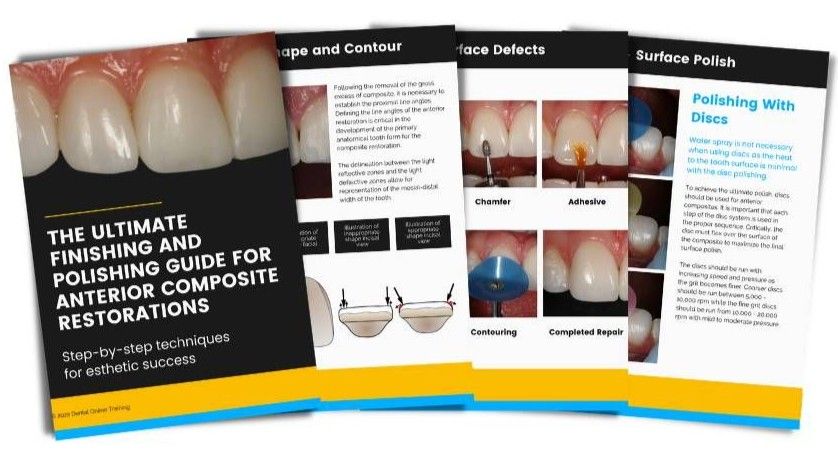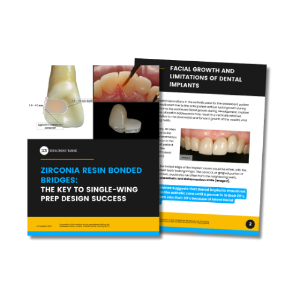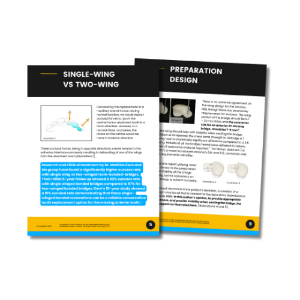What's inside?
CHAPTER 02
BONDABILITY OF ZIRCONIA
Zirconia Resin Bonded Bridges: Mastering Materials and Cementation Technique
Frequently asked questions
What are the primary ceramic materials used in dentistry for anterior fixed partial dentures?
Currently in dentistry, there are two ceramic materials that can be considered for anterior fixed partial dentures, commonly referred to as bridges – lithium disilicate (i.e. eMax) and zirconia.
What are the main differences between lithium disilicate and zirconia ceramics in dentistry, especially in terms of esthetics and strength?
Lithium disilicate is highly esthetic but has lower flexural strength (350 - 450 MPa) compared to zirconia (3Y), which has exceptional strength (1200 MPa). Zirconia is stronger but less translucent, making it suitable for posterior crowns and bridges. In contrast, lithium disilicate is primarily used for anterior crowns and veneers.
Why is 3Y zirconia recommended for resin-bonded bridges, and how does its strength compare to 4Y and 5Y zirconia?
3Y zirconia is recommended for resin-bonded bridges due to its exceptional strength and transformational toughening properties. Its strength far surpasses that of 4Y and 5Y zirconia, which are more esthetic but less strong. This strength is crucial for preventing fractures and ensuring the durability of the restoration.
Can you explain the process of bonding zirconia to tooth structure and why it differs from bonding other ceramics?
Bonding zirconia differs from other ceramics because it lacks glass particles. Zirconia bonding requires a strict protocol involving air particle abrasion, priming with 10-MDP monomer-containing primers, and using adhesive composite resin cement. Phosphoric acid should not be used for cleaning zirconia, as it can block resin-chemical bonding sites.
What is the APC concept, and why is it considered the standard for bonding zirconia in dental procedures?
The APC concept, promoted by Dr. Marcus Blatz, is a standard for zirconia bonding. It involves air particle abrasion (A), priming with 10-MDP-containing primers (P), and using adhesive composite resin cement (C). This concept ensures optimal adhesion and longevity of zirconia restorations.
Are there specific precautions or steps that need to be followed during the preparation and bonding of zirconia resin-bonded bridges to ensure long-term success and esthetics?
Yes, several precautions are essential. Proper cleaning of the zirconia is crucial using methods like micro-air abrasion or commercial zirconia cleaners. Isolation with a rubber dam is important to prevent contamination. Dual-cure resin cements are recommended, and light polymerization can enhance bond strength. Excess cement should be removed, and final polishing is critical for longevity. Minimizing adjustments to the zirconia is also essential to maintain its thickness and strength.
Download the ZRBB Single-Wing Prep Design Guide to learn about the proper preparation technique for ZRBBs. →
Download the ZRBB Single-Wing Prep Design Guide to learn about the proper preparation technique for ZRBBs. →
Zirconia Resin Bonded Bridges:
Key to Single-Wing Prep Design Success Guide
Key to Single-Wing Prep Design Success Guide

Achieve optimal esthetic outcomes by mastering the materials and cementation technique for zirconia resin-bonded bridges.



